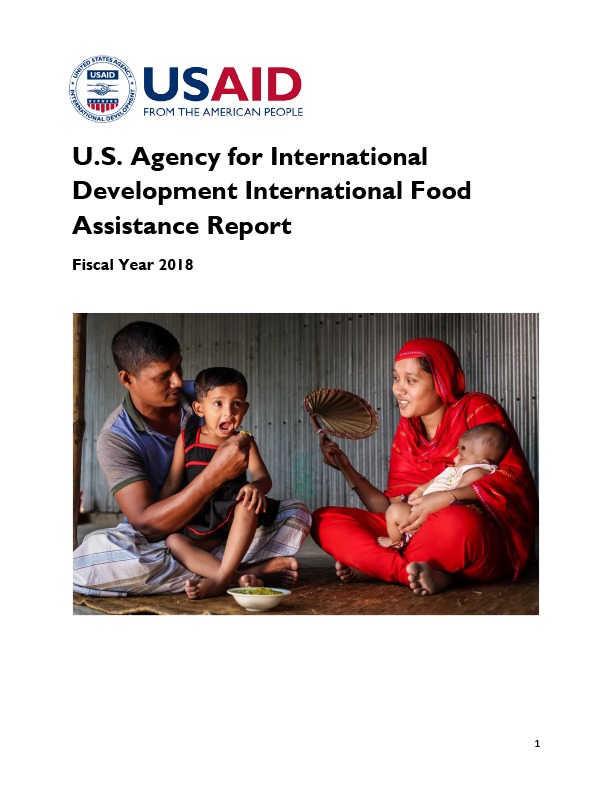Speeches Shim
In Fiscal Year (FY) 2018, the U.S. Agency for International Development (USAID) Office of Food for Peace (FFP) within the Bureau of Democracy, Conflict, and Humanitarian Assistance (DCHA) continued to demonstrate the compassion and generosity of the American people through the provision of more than $1.7 billion in food assistance overseas and the procurement of more than 1.4 million metric tons (MT) of food to serve a total of 35 million beneficiaries in 30 countries. Authorized by Title II of the Food for Peace Act, these contributions not only saved lives, but also rebuilt livelihoods, generated income, increased literacy, improved nutrition, strengthened resilience, and mitigated the impacts of future crises. Even with this process, the world continued to face unprecedented levels of need—in 2018, 80 million required emergency food assistance, according to the USAID-funded Famine Early Warning Systems Network (FEWS NET).
Global hunger was on the rise largely because of violent conflict. As a result, the world faced a second consecutive year of alarmingly high levels of emergency food needs. Over the last several years, the most vulnerable and chronically food insecure people have been in war-weary Syria, South Sudan, Somalia, Nigeria, and Yemen. In addition, new crises emerged in late 2017 and 2018. In Burma, more than 700,000 Rohingya fled persecution and crossed the border to Bangladesh. In Venezuela, a severe, regime-driven political and economic crisis has led to severe shortages of food and medicine that have caused approximately 2.6 million people to flee to neighboring countries. Looking ahead to 2019, none of these situations have seen a lasting resolution and some – notably Yemen – have deteriorated markedly.
To address these crises, USAID worked with dedicated partners to provide food assistance to save lives, reduce suffering, and support recovery for millions in both acute and chronic emergencies. Using a combination of approaches—including U.S.-sourced commodities; local and regional procurement of food; cash transfers for food; and food vouchers—appropriate to the local contexts, USAID was able to save lives, address the root causes of hunger, and build resilience and food security in local communities. The cases provided in the Regional Highlights section offer examples of the responses undertaken through USAID’s Title II investments.
In FY 2018, USAID spent more than 80 percent of its funding for USAID Title II food assistance on emergency response and roughly 20 percent for non-emergency programming. When combined with International Disaster Assistance (IDA) and Development Assistance funds provided as Community Development Funds (CDF) , USAID reached more than 76 million people in 62 countries with food assistance in FY 2018 with a total of $3.7 billion dollars and almost 2.5 million MT of food. This report provides the highlights of trends and activities in food assistance for the year.
USAID provides this report in pursuance to Section 407(f) of the Food for Peace Act, as amended by Section 3112 of the Agriculture Improvement Act of 2018 (Public Law 115-334).


Comment
Make a general inquiry or suggest an improvement.